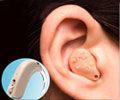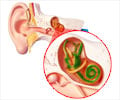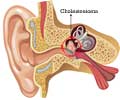Otitis Media/ Middle Ear Infection
Middle ear infection, or otitis media, is a common type of infection that may or may not accompany the infections of nose and throat. It is the infection of any part of the middle ear.
Brand Names and Generic Names of Drugs for Treatment of Otitis Media
Amoxicillin
Amoxicillin is a penicillin-like , β-lactam antibiotic.
Brand Names :
Moxica | Delamin | Biomoxil Kid | Hycimox | Dynamox | Moxileb Kid Dt | Trimox | Sermox | Taurmox Kid 125mg Tablets | Acmox
More ...
Amoxicillin and Clavulanate Potassium
Amoxicillin and Clavulanate Potassium contains semisynthetic antibiotic amoxicillin and β-lactamase inhibitor, prescribed for lower respiratory infections, otitis media, sinusitis, urinary tract infections, and skin Structure infections.
Amoxicillin and Clavulanic acid
Amoxicillin and Clavulanic acid is a combination of β-lactam antibiotic, and a β-lactamase inhibitor (potassium clavulanate) prescribed to treat infections of the ears, lungs, sinus, skin, and urinary tract.
Azithromycin
Azithromycin is a macrolide antibiotic used for various bacterial infections such as infections of the middle ear, throat, bronchus, sinuses, skin and soft tissue.
Brand Names :
Robial | Laz AX (250+60) | Laz AX (500+60) | Azyxin -Plus | Zathrin -AX | Zathrin -AX (500 mg) | Azintra -AX | Azro AM (500 mg) | Azro AM (250 mg) | Aziriv - A
More ...
Cefaclor
Cefaclor is a cephalosporin antibiotic, prescribed for certain infection caused by bacteria such as pneumonia, ear, lung, skin, throat, and urinary tract infections.
Brand Names :
Diclor | Vercef | Distaclor | Distaclor | Clorocef | Halocef | Vercef | Radiclor | Eclor Premix | Alclor
More ...
Cefditoren
Cefditoren is a third-generation cephalosporin antibiotic, prescribed for certain bacterial infections.
Brand Names :
Spectoren | Torocef -O | Cefditran | Taxitorin (200mg) | Cefdicare (200mg) | Cefforen (200mg | Ceftorin (200mg) | Spectoren (200mg)
More ...
Cefetamet
Cefetamet is a cephalosporin antibiotic, prescribed for susceptible infections.
Brand Names :
Bacirom -O | Altamet (250 mg) | Kuzet -250 | Recocef (250 mg) | Pryzm | Ultipime O | Cepime O (250 mg) | Kuzet -500 | Bacirom -O (500 mg) | Altamet (500 mg)
More ...
Ceftriaxone
Ceftriaxone is indicated for: • Lower Respiratory Tract Infections • Skin infections • Urinary Tract Infections • Pelvic Inflammatory Disease –infections related to the female genital tract Bacterial Septicemia-infection in the blood
Brand Names :
Encef | Malocef | Winceft | Zetox | Corcef 250mg Injection | Taxone -XP | Glen Tzb | Eftrio T | Arcef XP | Cefamed T 1.125
More ...
Cefuroxime Axetil
Cefuroxime Axetil is a semi synthetic cephalosporin antibiotic, prescribed for different types of infections such as lung, ear, throat, urinary tract and skin.
Brand Names :
C-Furo-CV (250mg/125mg) | C-Furo-CV (500mg/125mg) | Ceroxitum-CV (500mg/125mg) | Cotil-CV (500mg/125mg) | Covatil-CV (500mg/125mg) | Oratil-CV (125mg/62.5mg) | Oratil-CV (250mg/125mg) | Oratil-CV (500mg/125mg) | Stafcure-CV (500mg/125mg)
More ...
Clarithromycin
Clarithromycin is a macrolide antibiotic, prescribed infections of the middle ear, tonsillitis, throat infections, laryngitis, bronchitis, pneumonia, and skin infections.
Brand Names :
Neklitro (30 ml) | Clarivir Oral | Crixan (30 ml) | Maclar Susp | Novaclar | Broclars Kid | Crixan DT (125mg) | CLR -DT | Anaclar DT | Larit - DT
More ...
Erythromycin and Sulfisoxazole
Erythromycin and Sulfisoxazole is a macrolide and sulfonamide antibiotic combination, prescribed for acute otitis media.
Framycetin
Framycetin is an amino glycoside anti-infective agent, prescribed for eye/ear infections.
Brand Names :
Soframycin (Eye) (5 ml) | Frade (Skin) (5 gm) | Frade (Skin) (15 gm) | Frade (Skin) (40 gm) | Soframycin (Skin) (20 gm) (Cream) | Soframycin (Skin) (30 gm) | Soframycin Skin (100 gm) | Sofracort | Sofra Cort | Sofradex
More ...
Hydrocortisone, Neomycin and Polymyxin
Hydrocortisone, Neomycin and Polymyxin contains two antibiotics and a corticosteroid, prescribed for ear, eye and skin infections.
Levofloxacin
Levofloxacin is prescribed for treating certain bacterial infections, and preventing anthrax.
Brand Names :
Lotor 500 | Leon | Levoflox | Levoflox | Levoff | Glevo | Zilee INF | Levobact Inf | Levom | Lebact AM
More ...
Phenazone
Phenazone, also called antipyrine, is used
Orally to reduce fever and pain in conditions like migraine.
Brand Names :
Otil (Ear) (10ml) | Tox | Blephamin (E/E) | Tytin (Ear) (5ml) | Dart (300mg/150mg/50mg)
More ...
Sultamicillin
Sultamicillin is an antibiotic combination, prescribed for urinary tract infection, otitis media, and gonorrhea.
Brand Names :
Saltum Kid | Saltum | Aticef (375mg)
More ...
 MEDINDIA
MEDINDIA
 Email
Email















